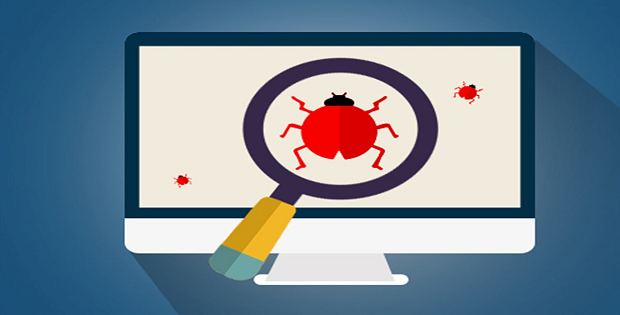7 Steps for Penetration Testing
Last Updated on 10 months by Touhid
Penetration testing or pen testing is types of security testing where cyber security specialists find out the vulnerabilities in a application, network or server that attackers can exploit. In this post, we will focus on the steps for penetration testing and required tools and techniques for penetration testing.
Table of Contents
Steps for Penetration Testing
What are the steps for penetration testing? There are seven (07) stages of penetration testing to find out the vulnerabilities in a application. The main purpose of penetration testing is to identify the all security vulnerabilities of a system such as application, network, servers, computer, firewalls.
To accomplish the penetration testing of a system, there need some sequential steps, which are as follows:
- Planning
- Reconnaissance
- Scanning
- Gaining Access
- Maintaining Access
- Exploitation
- Evidence collection and report generation
Now, we will discuss each type of penetration testing steps. So, every organization can arrange this type of security testing.
Step 1: Planning
Planning is the first steps for penetration testing. In this step, the client (organization) and the penetration testers clearly define logistics, expectations and objectives of the test. During this planning phase, the penetration testers work with your organization to understand your business, technical details and security risks.
The penetration testers also address the testing tools and techniques which will use in penetration testing period.
In this article, we have mentioned some best penetration testing tools which will use by penetration tester.
Step 2: Reconnaissance
In this penetration testing steps, penetration tester’s main focus is to collect much information about the target system such as application architecture, development platform, DNS, operation system, open ports, IP address, network topology, server, and security devices.
If a pentester knows the details information about the target, then he can easily find out the vulnerabilities of a system.
It is noted that, an expert hacker will spend maximum time in this phase because these sensitive information is very helpful to hack the system.
Step 3: Scanning
This is very important steps of penetration testing, where a penetration tester scans the target system for discovering vulnerabilities using automated tools and techniques. This phase scan the various target system such as a network and web application.
For example, Nmap, short for Network Mapper is a penetration testing scanning tool which is used to discovering the vulnerabilities or security holes in network environment. A penetration tester or network administrator does the following job using Nmap tools.
- To detect the which operating system running on network.
- To identify which devices are running such as servers, routers and switches.
- To find out the open ports of your system.
- And detect any specific vulnerabilities or risks.

Now, for web application, the scanning can be either static or dynamic.
A. Static Analysis
Static analysis is the process of find out the vulnerable functions within the code, detecting errors, libraries and logic that have implemented in application.
The main aim of static analysis is identify the weaknesses within source code before running an application. This can be done by manual process but using automated tools is much more effective. There are various automated tools of static code analysis. Here are the top 10 Static Code Analysis Tools for Java, C++, C# and Python:
B. Dynamic Analysis
Dynamic analysis is the process of testing and evaluation of an application during its execution. The main aim of dynamic analysis is to find out errors in an application while it is running.
In dynamic analysis, the tester enters the input data to the application and analyzing the output data. This scanning is extremely useful because it provides the application performance.
Step 4: Gaining Access
Gaining access is another steps for penetration testing which uses the various types of web application attacks such as SQL injection, cross-site scripting (XSS) and backdoors to discover a target’s vulnerabilities.
The testers try to exploit these vulnerabilities and gaining access to the target for stealing data and flooding the target with traffic. Typically, the target can be an application, firewall or a server.
Step 5: Maintaining Access
The next phases of penetration testing is ensuring that the access is maintained such as persistence presence. The penetration tester gain access into your system in order to find out the vulnerabilities. It is very important that the penetration testers need to maintain continued access to your system even if the system is rebooted, reset or modified.
The persistent threats are used by attackers who live into your system for long periods of time to steal your sensitive information.
Step 6: Exploitation
Exploitation is the very significant steps for penetration testing where the actual damage is done by attacker. Once the vulnerabilities have been identified, the pentester proceed to exploit the system and try to access data and damage the system.
The penetration tester will use different types of techniques to exploit those vulnerabilities in order to gain access to the target systems.
It is noted that, in penetration testing, the majority pentesters use the dummy flag technique when functioning with important data.
Step 7: Evidence Collection and Report Generation
After completion of all above penetration testing steps, the final step is to collect evidence of the exploited vulnerabilities and report submission to the organization head for review and necessary action. Now, it is the time for management’s decision on how this vulnerabilities or risk has to be addressed.
If the management’s don’t take any action or ignoring these risks, then the system will be vulnerable, that means the system is not secure and will be targeted by attackers.
The report will include the following information:
- Overall summary of penetration testing and details of each step.
- Information gathered during the pen testing.
- All the vulnerabilities exploited during the test.
- Accessed of sensitive data during the test.
- Important suggestions for ensure security.
What are the Software for Penetration Testing?
During the penetration testing steps, a pentester will use several types of tools to exploit the target. Here is the list of a few top tools that a tester can use to conduct this test.

1. Metasploit
Metasploit is an open-source software framework and most powerful tools which are used for penetration testing. The framework contains a set of a tool that use to test security vulnerabilities and hacking into systems.
2. Nmap
Network Mapper or Nmap is popular free and open source penetration testing tool that used for discovery the vulnerabilities or security holes in the network environment. Nmap is a pentesting tool which used by systems and network administrators of an organization.
3. Kali Linux
Kali Linux is a Debian-based Linux distribution which used for penetration testing, ethical hacking and network security assessments.
4. w3af
w3af is a web application attack and audit framework that used secure web applications by finding and exploiting vulnerabilities.
5. Sqlmap
Sqlmap is free and open source penetration testing tool which can detect and exploit SQL injection attack in database.
SQL injection is one of the most common web attacks that can take control an your database to alter or destroy the data. Attackers can take place his own malicious script in SQL statements, via web page input.
6. Netsparker
Netsparker is one of the most popular web application security scanner that scans websites, web applications and web services, and identifies security holes. It scans for security vulnerabilities of websites, web applications, web services.
There may different types of security vulnerabilities in your websites and web application such as SQL injections, Cross Site Scripting, Remote File Inclusion and Server-side injection are identified by Netsparker.
7. Nessus
Nessus is another open-source penetration scanning tool which scans a system in order find out vulnerabilities that malicious attacker can get access your system. This tool can protect from unauthorized access of your system and scan the different types of vulnerabilities such as DoS attack, malware and misconfiguration.
Learn more about Nessus and Download.
8. Burp Suite
Burp Suite is an integrated security testing web applications platform which used detect vulnerabilities for web applications. This particular tool used for identifying security vulnerabilities of a web application.
Learn more about Burp Suite.
Why Penetration testing is required?
The main aim of penetration testing is to identify vulnerabilities and security risks in your system. So, you can protect your system from cyber attacker. However, here is the top reason why penetration testing is required:
- To find out security vulnerabilities in an application.
- To discover security holes in system.
- To discover new bugs in existing system (i.e., application or network).
- To secure user sensitive information.
- To secure financial and business data of an organization.
- To protect form cyber attacks.
- To ensure confidentiality, integrity, and availability of the data.
- To implement information security strategy in the organization.
Conclusion
Finally, we have clearly explained the all 7 steps for penetration testing of an application and also mentioned the best software for penetration testing in order to secure a system. Hope this article will be helpful for you.
Affiliate Disclosure : Cyberthreatportal is a participant in the Amazon Services LLC Associates Program, an affiliate advertising program designed to provide a means for website owners to earn advertising fees by advertising and linking to amazon.com.





